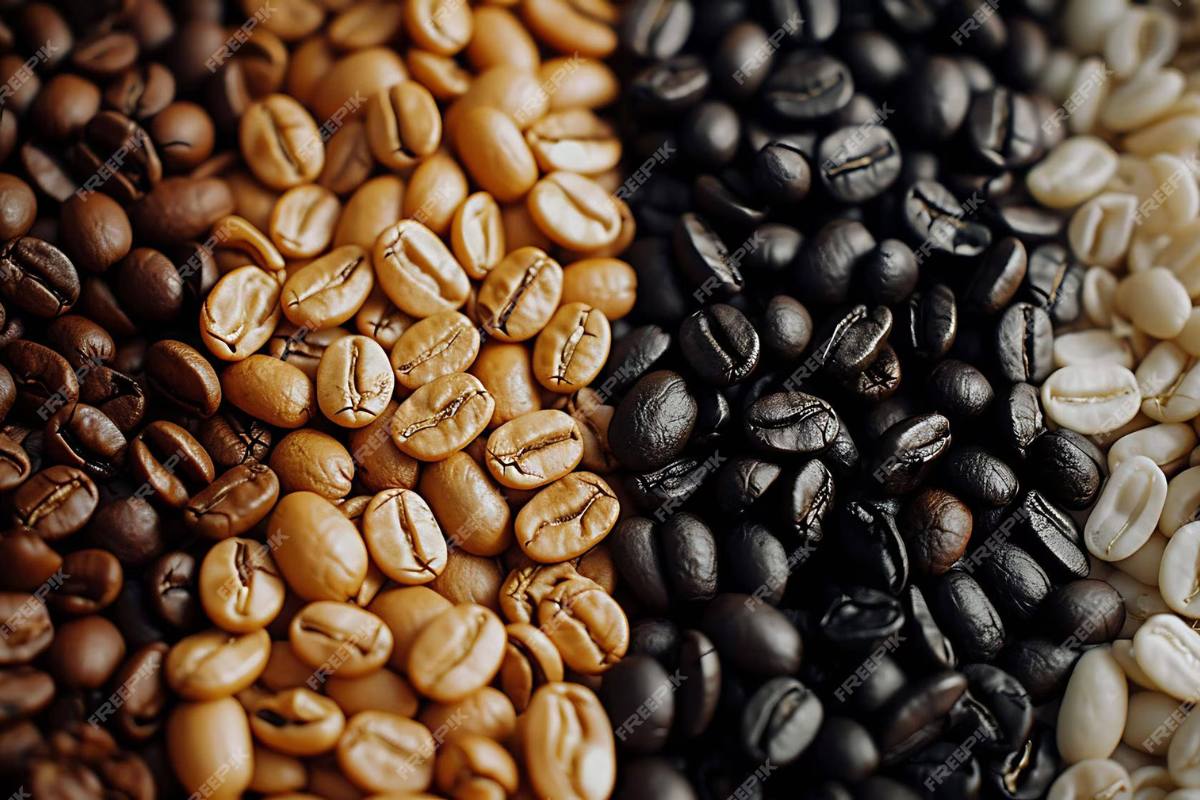Roasting is one of the most transformative stages in the coffee production process. It’s where green coffee beans are heated to develop the aroma, flavor, and color that we recognize as coffee. The roast level dramatically influences how coffee tastes — from bright and fruity to dark and bold.
What Happens During Coffee Roasting?
Green coffee beans are soft, grassy, and almost odorless. Through roasting, chemical reactions called Maillard reactions and caramelization occur, transforming the beans into flavorful, aromatic coffee.
The roaster controls variables like:
- Temperature
- Time
- Airflow
These factors determine how light or dark the coffee becomes and what flavors are developed or suppressed. Even minor changes in these variables can result in dramatically different flavor outcomes, which is why roasting is considered both an art and a science.
The Main Roast Levels Explained
1. Light Roast
- Color: Light brown
- Surface: Dry, no oils visible
- Flavor profile: Bright acidity, floral, fruity, tea-like notes
- Origin flavors preserved: Yes
- Popular in: Specialty coffee and pour-over methods
Light roasts showcase the bean’s terroir — its soil, climate, and altitude. Coffees from Ethiopia or Kenya, for example, highlight citrus, floral, and berry notes when lightly roasted. They offer a clean and vibrant cup, ideal for those who enjoy delicate flavors.
2. Medium Roast
- Color: Medium brown
- Surface: Mostly dry
- Flavor profile: Balanced acidity, body, and sweetness; chocolate, caramel, and nutty tones start to develop
- Origin flavors preserved: Partially, but balanced with roast flavors
- Popular in: Drip coffee, French press, AeroPress
This is often referred to as the “American roast” and is a crowd-pleaser due to its balance. It appeals to those who enjoy a harmonious mix of brightness, sweetness, and mild roast complexity.
3. Medium-Dark Roast
- Color: Richer brown, with light oil sheen
- Surface: Some oil starts appearing
- Flavor profile: Lower acidity, more body; dark chocolate, spice, toasted nuts
- Origin flavors: Fading; roast flavors dominate
- Popular in: Espresso, moka pot, and some drip
This roast offers a satisfying richness, ideal for those who enjoy bolder, deeper flavors with reduced acidity but without the full bitterness of a dark roast.
4. Dark Roast
- Color: Dark brown to almost black
- Surface: Oily
- Flavor profile: Smoky, bitter, burnt sugar, sometimes ashy
- Origin flavors: Mostly overshadowed by roast flavor
- Popular in: Traditional espresso, Italian roast, French roast
Dark roasts create that bold, bitter flavor associated with European-style espresso or diner coffee. While some love its robust character, others may find it overpowering.
How Roasting Affects Coffee Acidity and Body
- Light Roast: Higher acidity, lighter body
- Medium Roast: Balanced acidity and medium body
- Dark Roast: Low acidity, heavier body
These differences greatly influence how coffee pairs with brewing methods and personal taste preferences.
Common Misconceptions About Roasting
- “Darker means stronger.” False — roast level does not determine caffeine content. Light roasts often have slightly more caffeine than dark roasts by volume.
- “Dark roasts are higher quality.” Not necessarily. Dark roasting can mask low-quality beans, while light roasting highlights the bean’s quality and origin.
How to Choose the Right Roast for Your Taste
- If you like fruity, vibrant coffee: Light roast (great for pour-over, Chemex).
- If you prefer balance: Medium roast (excellent for drip, French press).
- If you enjoy rich, bold coffee: Medium-dark or dark roast (ideal for espresso, moka pot).
Roasting and Brewing Compatibility
- Espresso: Works best with medium to medium-dark roasts for balance and crema.
- Filter methods (pour-over, Chemex): Light and medium roasts preserve clarity and brightness.
- French Press: Medium to dark roasts enhance body and richness.
- Cold Brew: Dark roasts produce smooth, chocolatey results with lower acidity.
Roasting’s Influence on Sustainability and Freshness
Freshness matters — roasted beans start losing flavor about 2 to 4 weeks after roasting. Always look for roast dates on packaging to ensure peak flavor.
Roasting locally reduces the carbon footprint compared to imported roasted beans. Additionally, lighter roasts may require higher quality beans since the roast doesn’t hide defects, promoting better farming practices.
Roasting Defines the Coffee Experience
Roasting is both science and art. It unlocks the potential of green coffee, translating the hard work of farmers into delightful flavors. Whether you enjoy the crisp brightness of a light roast or the bold strength of a dark roast, understanding roast levels empowers you to make better coffee choices. It’s not just about darkness — it’s about discovering the flavors that best match your palate.
